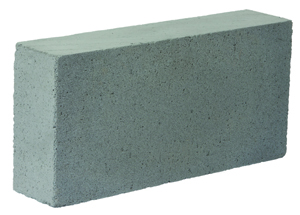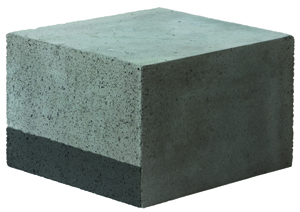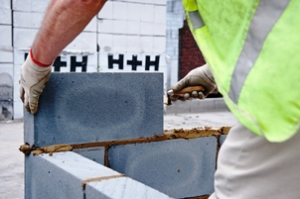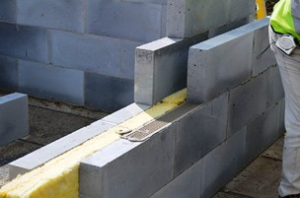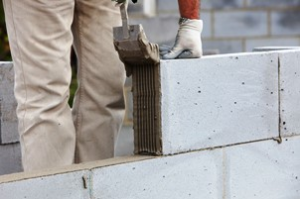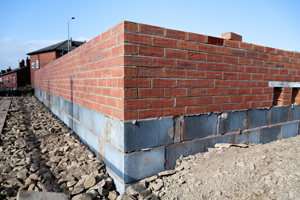Suppliers of: Celcon concrete blocks lightweight concrete blocks concrete thin joint system
H+H UK LTD manufacture a wide range of aircrete blocks (AAC), a lightweight Concrete Blocks to suit all types of wall construction.
Useful Resources:
- BIM files available on BPi
- H+H Academy: Online training and resources Click here
H+H is the UK’s largest manufacturer of aircrete products. We manufacture the market leading range of Celcon Blocks, including Foundation Blocks, Plus Blocks and Vertical Wall Panels.
H+H aircrete products offer a complete building material that meets the requirements of the Building Regulations, with the flexibility to offer solutions to hospitals, schools, offices, industrial warehouses and housing (social and private).
Used in partition, separating and external walls (solid or cavity), firewalls and as an infill to framed construction, our products provide durability and fire resistance as well as superb thermal and sound insulation.
Main Product Ranges:
Celcon Blocks
Celcon Blocks in Solar, Standard, High Strength and Super Strength Grades are the most commonly used aircrete block in the H+H range. All Celcon Blocks are BBA certified, are fire resistant (100mm walls, up to 4 hours, 2 hours if loadbearing) and have been classified 0 surface spread of flame and non-combustible to Class A1 (the highest class).
Celcon Block Solar Grade
Celcon Blocks Solar Grade is principally used where enhanced thermal performance is required. With superior thermal conductivity Solar Grade Celcon Blocks are suitably loadbearing for two storey buildings and can be used below DPC.
Celcon Block Standard Grade
Celcon Blocks Standard Grade is BBA certified and has a compressive strength of 3.6N/mm2. Due to its all-round performance, it is possible for a 100mm Standard grade Celcon Block to be used throughout a build, eliminating on-site confusion.
Celcon Block High Strength & Super Strength Grade
H+H’s Celcon Blocks High Strength Grade (7.3N/mm2) and Super Strength Grade (8.7N/mm2) are used principally where higher compressive strengths are required such as in the foundations and lower storeys of three storey buildings, piers under high vertical loads and in multi-storey buildings.
Celcon Vertical Wall Panels
Are the new generation of mechanically handled aircrete products that builds on the efficiency of thin-layer construction. These products offer all the benefits of aircrete material with proven site productivity.
Developed to enhance the key benefits of our thin-joint system; speed and quality of build with reduced waste. H+H UK’s Vertical Wall Panels offer all the attributes of aircrete as a building material whilst offering additional value to the project.
H+H Vertical Wall Panels are made to extremely tight manufacturing dimensional tolerances, supplied specifically for use with a combination of ancillary products and bonded using H+H’s proprietary element mortar to provide a nominal 3mm joint. This ensures a quality and quick build with little or no site wastage.
Celcon Plus Blocks
Celcon Plus Blocks are an alternative to the 440 x 215mm face format block and are suitable for the same applications. They are longer at 630mm long and come in a variety of thicknesses.
Celcon Foundation Blocks
Available in Standard Grade (3.6N/mm²) and High Strength Grade (7.3N/mm²), Foundation Blocks can be used to support 3 storey constructions. They are suitable for the support of solid or cavity walls, framed construction or suspended floors, including beam and block.
Jumbo Bloks
Jumbo Bloks are produced with the latest technology, offering a high degree of dimensional accuracy with sharp arises, which make them ideal for use with Celfix mortar.
Celcon Block Coursing Units
Coursing Units are produced from the same material as all H+H aircrete and are suitable for the same applications as conventional size Celcon Blocks, allowing consistency within the building fabric.
Celfix Mortar
Celfix Mortar is cement based and supplied as a dry, pre-mixed powder in 25kg bags. It has been designed to replace the traditional sand:cement mortar and is used with building with our Thin-Joint System. Celfix Mortar starts to set within 10 minutes of application and approaches full design strength in just 1 to 2 hours.
H+H Providing the proof – the role of the manufacturer
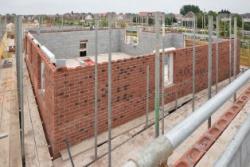 In an era where the accuracy of product descriptions is right in the spotlight, it’s worth considering what you can expect from a supportive manufacturer.
In an era where the accuracy of product descriptions is right in the spotlight, it’s worth considering what you can expect from a supportive manufacturer.
Responsible manufacturers have recognised for years that it is not enough simply to describe the technical performance of a product. Specifiers can now expect to see detailed information on the context in which the product is used, from health and safety advice to embodied carbon. H+H is one manufacturer that has embraced the demand for comprehensive information.
Energy performance: The Future Homes Standard (FHS)
After years of consultation and gradual movement, FHS is set to come into force this year, paving the way for new homes to be zero carbon.
During the decades that the energy efficiency of new homes has been under scrutiny, the elements that need consideration have evolved. For example, in 2007, the objective was to build homes that were zero carbon in use.
This is still the primary objective of the Future Homes Standard – hence the focus on new technology to eliminate the use of fossil fuel for heating. However, many housebuilders are now also considering the carbon emissions associated with the manufacture of building materials, in order to reduce the whole life carbon emissions of new buildings.
It’s a new way of thinking for the entire supply chain and product manufacturers need to be transparent and proactive in producing the information required to help builders meet their objectives.
Fabric Energy Efficiency
It makes sense to build homes that are intrinsically as energy efficient as possible, although FHS does also recognise that there are limits to what can be achieved. For walls, the U-value requirement is 0.18W/m2K. At this extreme level of insulation every detail counts – and it is generally detailing that will make the difference, particularly the issue of thermal bridges.
Such bridges typically occur at junctions and can account for as much as 30% of fabric heat loss. The impact of thermal bridges is described as a Psi value and this needs to be included as part of the calculation process to demonstrate compliance with building regulations.
Calculating the potential impact of thermal bridges and working out the design details required to reduce it, can be complex and time-consuming. H+H produced a solution to this issue by simply providing Psi value calculations for over 3,000 potential junction details using its Solar, Standard, High Strength and Super Strength Grade aircrete blocks. The calculations cover all uses of aircrete in cavity, walls, beam and block floors, separating walls or foundations below DPC. All are freely available for housebuilders.
Whole Life Carbon
Eliminating carbon emissions from the built environment requires buildings to produce no carbon emissions throughout their life cycle. We know how to eliminate carbon emissions from a building in use, but calculating the impact of the construction process is a relatively new field.
Manufacturers are right in at the start, describing their contribution to CO2 emissions in terms of embodied carbon. This should include the carbon emissions associated with manufacture, lifetime operation and end of life disposal.
As with any new endeavour, it is taking time for embodied carbon calculation methods to be scrutinised and accepted. There remain variations in the ways embodied carbon numbers are calculated and described.
For H+H the process is relatively straightforward. Aircrete blocks are produced in the UK, using minimal raw materials. The performance of the product in use is well understood and its end-of-life disposal is benign in terms of carbon emissions. H+H is therefore comfortable with producing detailed lifecycle assessments which include every stage of the product’s life cycle, and the company is actively promoting the Environmental Product Declarations which discuss the calculation method as well as providing an embodied carbon figure.
Right now, it can be difficult to make sense of embodied carbon figures for different building materials, as the calculation methods may not be directly comparable (some EPDs do not include end-of-life emissions, for example). Specifiers need to be up to speed to make sense of the numbers available.
Responsible product information
Providing this breadth and depth of information requires investment from manufacturers in both technical expertise and the communication support to share information accessibly with the wider construction industry. It’s a recognition of the interdependence of the supply chain and the co-operation required to reach common objectives of safety and sustainability.
H+H Blooming Good News: Boosting Biodiversity at Borough Green
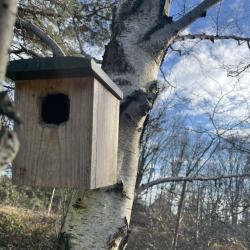 At H+H UK, we believe that even small actions can make a big difference when it comes to biodiversity. As part of our ongoing commitment to environmental stewardship, we recently took some exciting steps to enhance the natural habitat at our Borough Green site.
At H+H UK, we believe that even small actions can make a big difference when it comes to biodiversity. As part of our ongoing commitment to environmental stewardship, we recently took some exciting steps to enhance the natural habitat at our Borough Green site.
Sowing the Seeds of Change
This March, we got our hands dirty for a great cause—planting wildflowers! Our designated wildflower area at Borough Green has now been sown with a specially selected mix of flowers designed to attract pollinators like bees and other insects. These flowers will not only add a splash of colour to the site, but also provide a vital food source for local wildlife.
A Home for Feathered Friends
Borough Green isn’t just about the flowers—our bird boxes are also playing an important role in supporting local wildlife. As part of our biodiversity monitoring, we recently checked all five bird boxes installed around the site. We’re delighted to report that every single one has been used, a fantastic indicator that the area is thriving with bird activity.
One of the highlights of our review was bird box no 1, which housed a blue tit’s nest last season. By March, any chicks would have already flown the nest, making this the ideal time to inspect and clean out the boxes, ensuring they’re ready for this year’s nesting season.
Interestingly, bird box no 5 revealed some unexpected activity—a woodpecker has likely paid a visit! The telltale sign? An enlarged entrance hole is a classic indicator of woodpecker presence. It’s always fascinating to see how different species make use of our biodiversity initiatives.
Commitment to Responsible Sourcing
Our biodiversity work ties into H+H UK’s broader commitment to responsible sourcing and environmental responsibility. Graham Sargeant leads our compliance with the Responsible Sourcing Standard BES 6001, and initiatives like these are an important part of our sustainability efforts.
By creating and maintaining habitats that support wildlife, we’re not only enriching the local ecosystem, but also reinforcing our commitment to sustainable practices. It’s rewarding to see these efforts pay off, and we look forward to watching our wildflower area flourish and our bird boxes continue to provide shelter for avian visitors in the months to come.
Stay tuned for more updates as we continue to grow our biodiversity initiatives—one seed, one nest, and one small step at a time!






